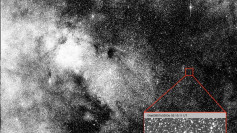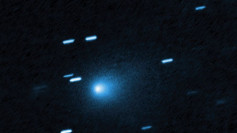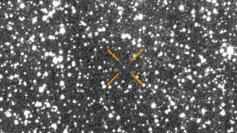A growing scientific dispute over the interstellar object known as 3I/ATLAS has escalated into a public feud between two of the world's most recognizable physicists, Harvard astrophysicist Avi Loeb and theoretical physicist Michio Kaku. The disagreement underscores deep divisions over how to interpret limited data on rare objects entering the solar system-and how boldly scientists should speculate in the absence of definitive evidence.
The object, first detected earlier this year, has drawn comparisons to 'Oumuamua, the first documented interstellar visitor observed in 2017. Loeb was among the most vocal proponents of the theory that 'Oumuamua may have represented extraterrestrial technology. Now, he argues that 3I/ATLAS may also show unusual characteristics worth scientific scrutiny, including signs of anomalous acceleration and possible mass ejection patterns.
Kaku rejected those claims during a recent interview, stating that the available data does not support theories of artificial origin. He said scientists should refrain from invoking extraterrestrial intent without proof, remarking that "there are no aliens jumping out of a Hollywood set and hence, no threat to the earthlings."
Loeb responded sharply in an interview of his own. "Well, again, he didn't write a single scientific paper on this subject," he said. "He's also a commentator and he's again trying to be liked and popularize science." Loeb insisted that his position is grounded in data modeling, not speculation. "It's not as if he's saying that based on any calculation," he continued.
Loeb cited work published with one of his students analyzing the object's velocity profile. "We found that it should have arrived from the population of old stars in the Milky Way disk because those stars were kicked around for a longer time so they have a higher characteristic speed relative to the sun," he explained. He added, however, that this conclusion rests on a critical assumption-that 3I/ATLAS inherited its motion from its parent star.
"That has a big caveat," Loeb said. He noted that the object may have gained speed through ejection from a planetary system, rather than from stellar motion alone. "Neglecting the ejection speed in the calculation and secondly assuming that it's a natural object" are, he argued, unwarranted assumptions-and if the object were technological, "the speed would have been related to the propulsion system."
Beyond the scientific dispute, Loeb also expressed frustration with NASA over unreleased high-resolution imagery of 3I/ATLAS. "Oh yeah they haven't released it and I don't believe that they're doing it on purpose," he said, suggesting bureaucratic delays linked to the federal government shutdown. He noted the imagery offers "30 kilometers per pixel so it's three times better than the Hubble image."
Loeb added that NASA's acting administrator responded to a social media post by Kim Kardashian during the same period a Congressional inquiry was submitted seeking the data. "I didn't get a response," he said.




